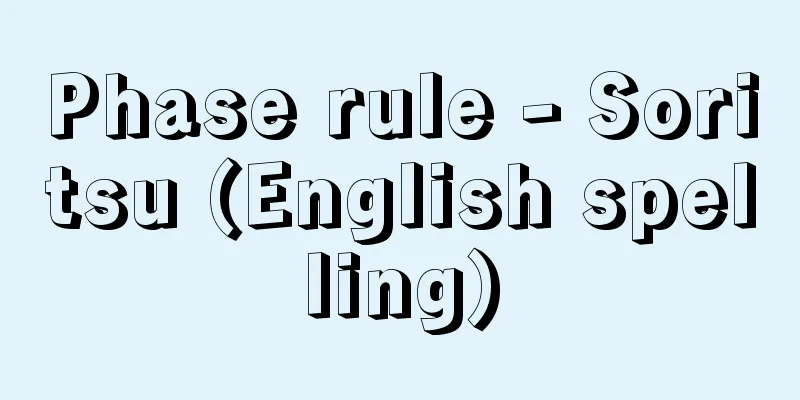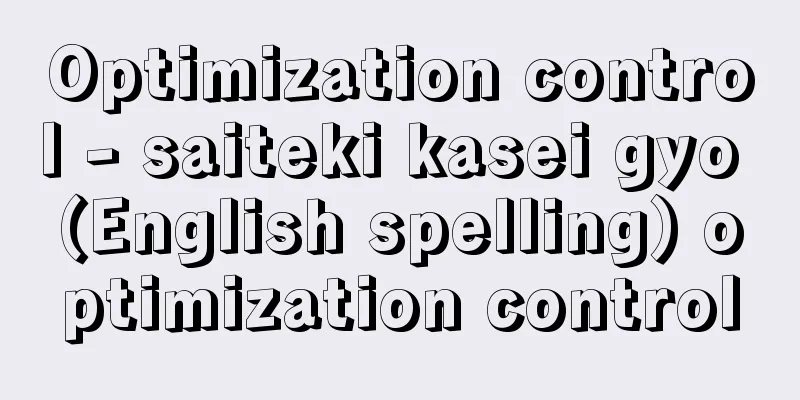Debt title - Saimu meigi

|
A document indicating the existence and scope of a certain private law claim, which has been given enforceable power by law. Under current law, it is limited to public documents. Compulsory execution is premised on the existence of a claim, but under the current system, the enforcement agency and the agency that determines the claim are separate entities, so a title of obligation is necessary. In other words, if the existence and scope of the claim are notarized in a title of obligation, the enforcement agency has a duty to enforce the claim on this premise, and the execution is considered to be lawful. However, in order to actually apply for execution, in principle, a writ of execution must be attached to the title of obligation, and a title of obligation with a writ of execution attached is called an enforceable original. The documents that become debt instruments are stipulated in Article 22 of the Civil Execution Act. According to it, the following are debt instruments: (1) Final (benefit) judgment. (2) Judgment with declaration of provisional execution. (3) Trials which cannot be appealed without filing an appeal (decisions on the reimbursement of litigation costs = Article 69 of the Civil Procedure Act, decisions for substitute execution or indirect enforcement = Articles 171 and 172 of the Civil Execution Act, etc.). (4) An order for compensation for damages with a declaration of provisional execution (see Article 26, paragraph 2 of the Crime Victims Protection Act). (5) Payment order with declaration of provisional execution. (6) Any action by the clerk of the court determining the amount of litigation costs or costs of settlement to be paid or the amount of execution costs and monies to be returned. (7) Execution deed. (8) A foreign court judgment which has become final and enforceable. (9) An arbitral award with a final enforcement decision. (10) Any record or judgment that has the same effect as a final judgment (such as a settlement record, a record of admission of claim, a mediation certificate, a judgment in lieu of mediation, an entry in the bankruptcy claim schedule, or an entry in the rehabilitation creditor schedule). [Yoshinobu Homma] [Reference] | | |Source: Shogakukan Encyclopedia Nipponica About Encyclopedia Nipponica Information | Legend |
|
一定の私法上の請求権の存在および範囲を表示した書面で、法律が執行力を与えたもの。現行法上、公の文書に限られる。強制執行は請求権の存在を前提とするが、現行制度上、執行機関と請求権を確定する機関が別個のものとされているので、債務名義が必要となる。すなわち、債務名義でもって請求権の存在・範囲が公証されていれば、執行機関はこれを前提として執行する職務上の義務を有し、また、その執行は適法とされる。ただ、現実に執行の申立てをするには、原則として債務名義に執行文の付与されることが必要であり、執行文の付与された債務名義を執行力ある正本という。 債務名義となる文書は、民事執行法第22条で定められている。それによれば、以下のものが債務名義となる。 (1)確定(給付)判決。 (2)仮執行宣言付き判決。 (3)抗告によらなければ不服を申し立てることができない裁判(訴訟費用償還決定=民事訴訟法69条、代替執行あるいは間接強制のための決定=民事執行法171条・172条など)。 (4)仮執行宣言付き損害賠償命令(犯罪被害者保護法26条2項参照)。 (5)仮執行宣言付き支払督促。 (6)訴訟費用もしくは和解の費用の負担の額を定める裁判所書記官の処分または執行費用および返還すべき金銭の額を定める裁判所書記官の処分。 (7)執行証書。 (8)確定した執行判決のある外国裁判所の判決。 (9)確定した執行決定のある仲裁判断。 (10)確定判決と同一の効力を有する調書または裁判(和解調書、請求の認諾調書、調停証書、調停にかわる裁判、破産債権表の記載、更生債権者表の記載など)。 [本間義信] [参照項目] | | |出典 小学館 日本大百科全書(ニッポニカ)日本大百科全書(ニッポニカ)について 情報 | 凡例 |
<<: Choi Myeong-gil (English spelling)
>>: Debt guarantee - Saimuhosho
Recommend
Yukio Endo
Born: January 18, 1937 in Akita, Akita [Died] Marc...
Kuttāb (English spelling)
An Arabic word meaning "school." It gene...
Neurodermatitis - Neurodermatitis
A type of skin disease. When allergic contact derm...
Torstensson, L.
…reigned from 1588 to 1648. He sent troops to fig...
Katayama Hell - Katayama Hell
...Also, on the east bank of Akazawa, 6 km from M...
Processing metallurgy
...The importance of chemical metallurgy, which h...
Lysimachia fortunei (English spelling) Lysimachiafortunei
… [Ken Inoue]. … *Some of the terminology that me...
Short circuit reaction
When faced with a complex situation, reacting impu...
Bunji Okazaki
1914-1998 A camera and electronics engineer from ...
Zhang Zhang - Food
1133‐80 A scholar from the Southern Song Dynasty o...
Raw ore (English spelling)
…In other words, in the broad sense, ore dressing...
Edmonton - Edmonton (English spelling)
The capital of the province of Alberta, Canada, l...
Microcoryphia
...A general term for insects belonging to the or...
Nabuco - Nabuco (English spelling) Joaquim Nabuco
Brazilian diplomat and abolitionist. Born in Reci...
Islam - Islam
A religion founded by Muhammad (Mahomet) as a pro...









